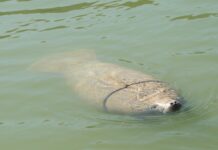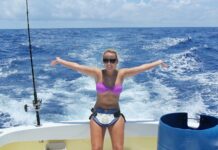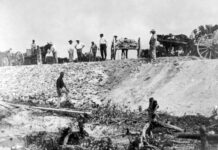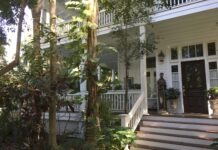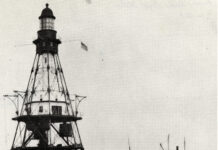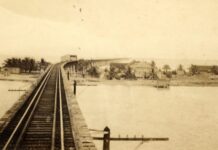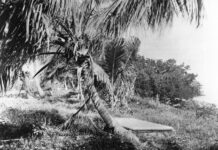Hernando D’Escalante Fontaneda was born in Cartagena, Columbia, circa 1535. Sometime around 1548, the boy started to travel from the New World to Spain, where he was to embark on his formal education.
The ship never arrived at its destination. While navigating the Straits of Florida, it sailed into a hurricane and was dashed against the corals of the Florida Reef. Hernando and scores of others survived the shipwreck and managed to battle the waves and wind long enough to wash ashore in what is thought to be the Lower Keys.
When Indians discovered the survivors, they were taken captive. Calos, the chief or cacique of the Calusa people, liked Hernando D’Escalante Fontaneda. The rest of the survivors would not be so lucky. “Escalante,” Calos said, “tell us the truth for you know well that I like you much. When we tell these, your companions, to dance and sing, and do other things, why are they as mean and rebellious that they will not? Or is it they do not fear death, or will not yield to a people unlike them in their religion. Answer me; and if you do not know the reason, ask it of those newly seized, who of their own fault are captives now, a people whom once we held to be gods come down from the sky.”
Fontaneda said, “My Lord, as I understand it, they are not contrary, nor is it for some evil reason, but it is because they cannot understand you, which they earnestly strive to do.”
Commonly remembered as Fontaneda, he spent 17 years living with the Calusa Indians. His memoir, published in 1575, provided some of the earliest firsthand accounts of life in the Florida Keys. He wrote about two Indian villages in the island chain, Cuchiyaga and Guaragunbe. The larger of the two villages was Guaragunbe. “The Indians of the Islands of Guaragunbe were rich; but, in the way that I have stated, from the sea, not from the land.”
Some authorities think these islands are the Matecumbe Keys.
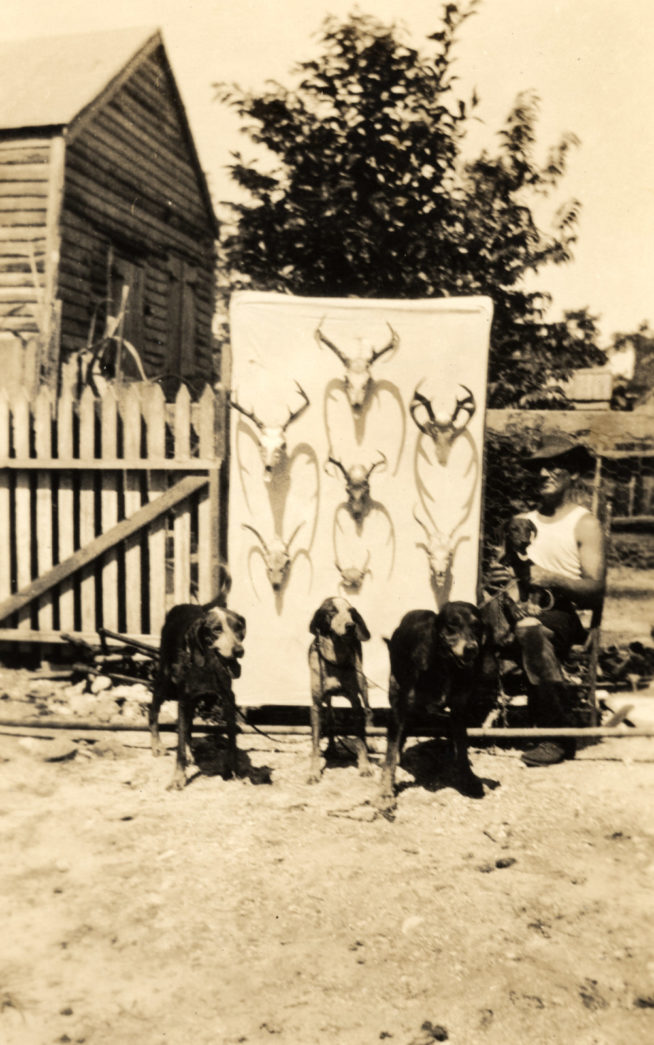
Cuchiyaga was the smaller of the two communities. According to Fontaneda, the name meant a “place where there has been suffering.” Cuchiyaga was located in the Lower Keys. Fontaneda wrote that the “Christians” being held captive were surprised by the presence of deer on the Islands of Cuchiyaga.
Some things refuse to change. People visiting the Keys for the first time are still surprised to learn that deer live in the Florida Keys. In Fontaneda’s day, Key deer could be found from Key Largo to Key West. Indigenous people hunted them for their meat and hides. The bones and antlers, too, could be fashioned into tools like socketed antler points that could be sharpened and attached to a wooden shaft and used as a spear or dart.
Key deer are a subspecies of white-tailed deer. The smallest deer species in the United States, Key deer grow up to be about the size of a large dog. Bucks can stand up to 32 inches tall at the shoulder and weigh 55-75 pounds, and does are a little slighter in stature. Early pioneers hunted them for meat and hides and to collect their antlers like trophies. They were also hunted for sport and hunted, nearly to extinction. “Hunters” would unleash their dogs on islands where the deer could still be found, and the dogs would chase them to exhaustion. The deer would be driven into the water, hoping to escape, where men on boats could easily kill them.
State Representative Bernie C. Papy, urged on by the Key West Chamber of Commerce and other groups, introduced a bill to protect Key deer because, among other reasons, if protected, their numbers would grow, and they would become a tourist attraction. The bill was signed into law by Governor Fred Cone in 1939.
By 1940, only about 50 Key deer were still living in the Lower Keys. Not thwarted by laws protecting the deer, poachers continued to hunt them. In the 1950s, with their numbers still tinkering on the edge of extinction, efforts were made to create a national refuge. The establishment of the National Key Deer Refuge in 1957 helped the little deer turn the corner, and their numbers began to grow.
Today, with a population of about 750, the dog-sized deer can be found on about 25 islands in the Lower Keys, where they move from island to island, utilizing food and water sources by swimming between them. They are most commonly associated with Big Pine and No Name Keys and have, indeed, become a tourist attraction. For some locals, they are even considered to be, if not a pest, then pesky. They have been conditioned to nibble in gardens and rummage through garbage cans.
For visitors looking to snap their picture, Key deer can often be sighted by driving down Big Pine and No Name Key side roads. The deer will practically pose for a photo but resist the urge to reach out and feed them. The habit reinforces behaviors that endanger them by rewarding their entry into neighborhoods where they become susceptible to dog attacks and traffic accidents.




